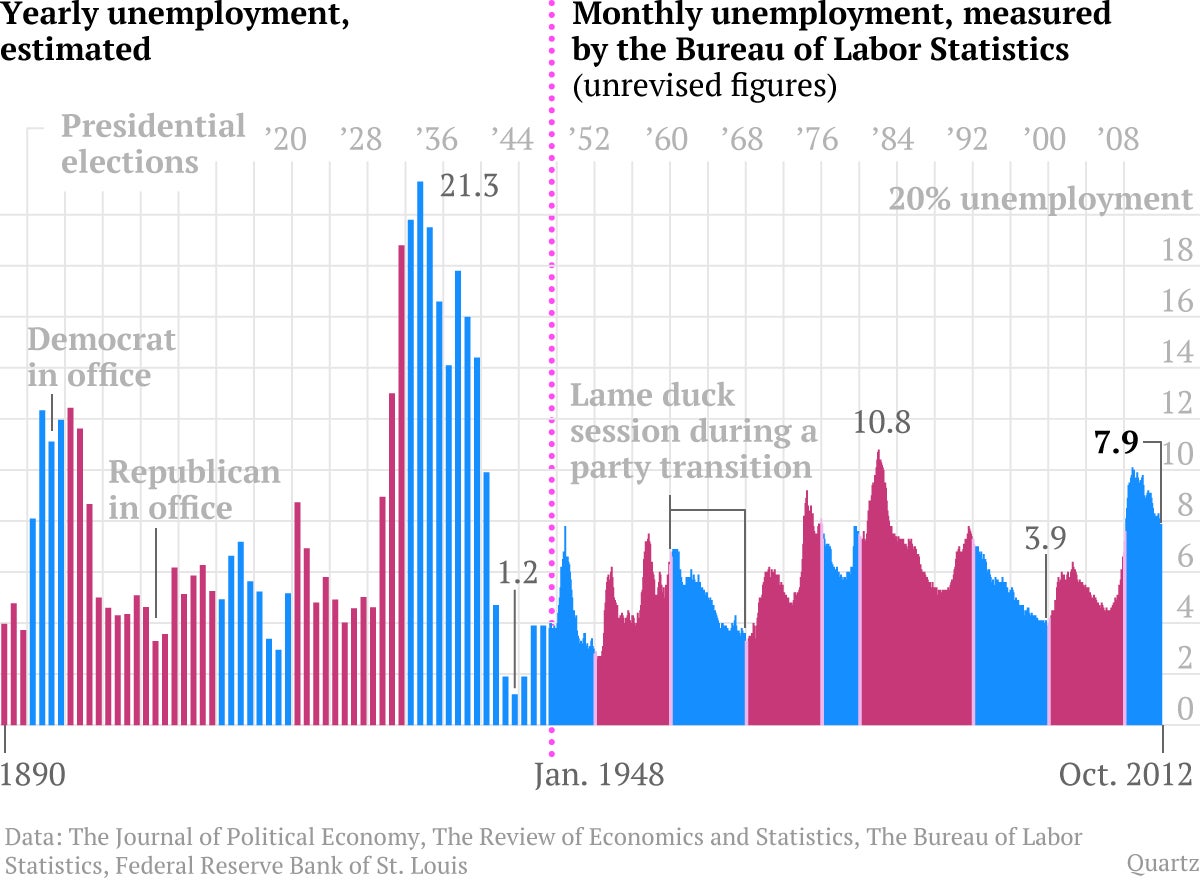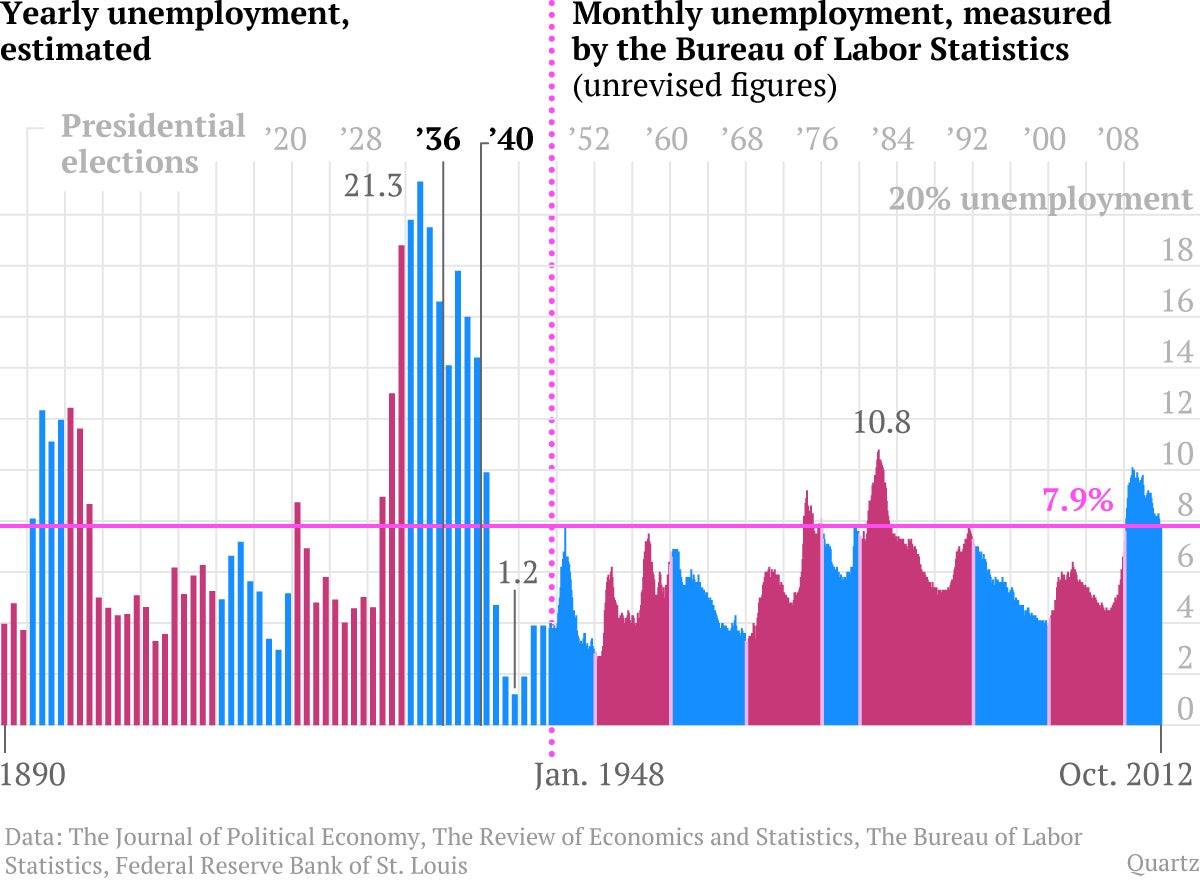How to use the jobs report to make any case you want for Obama’s reelection chances
The US jobs report was just released, and national unemployment in October stood at 7.9%. Because this is the last report before Tuesday’s presidential election, everyone is naturally asking: What does this mean for President Obama’s reelection chances?

The US jobs report was just released, and national unemployment in October stood at 7.9%. Because this is the last report before Tuesday’s presidential election, everyone is naturally asking: What does this mean for President Obama’s reelection chances?
Both supporters and detractors of the president should take comfort. The new jobs number assures victory for Obama on November 6. But it also means that he’s going to lose the election horribly. Here’s a guide to making whichever argument you prefer:
Option One: Obama is doomed
Making the case that there’s a slim chance of an Obama win is easy. First, take the chart above, cut along the pink dotted line, and throw away the left half of it. Then, pick the highest unemployment rate at which an incumbent has won reelection—Ronald Reagan in 1984, when the figure announced before the election was 7.4%—and draw a line like so:

Now, what you’ll notice is that every time a president has run for reelection with the unemployment rate above this line, he has lost. Carter in 1980, when the rate was 7.5%? Lost. Bush, in 1992, again, when it was 7.5%, just a tenth of a percentage point above the Reagan threshold? Done for.
So, how should you package this conclusion? Follow the example of The New York Times—”No American president since Franklin Delano Roosevelt has won a second term in office when the unemployment rate on Election Day topped 7.2 percent”—and the The Washington Post—”No president since World War II has been reelected with the unemployment rate higher than 7.4 percent.”
You’ll notice a slight difference in the unemployment figure cited. You should go with 7.4: That was the unemployment number originally reported for October 1984, right before the election happened. (The 7.2% figure is the revised unemployment rate for November 1984, but voters didn’t have that information at the time.)
Option Two: Obama’s victory is guaranteed
The media hasn’t made this argument as much, but it’s equally easy to do: Just flip the previous one on its head.
Again, start with the chart at the very top of this post, but this time, leave everything to the left of the pink dotted line and draw a fresh solid line at 7.9%, the current unemployment rate.

Now, what is abundantly clear is that every time a president has run for reelection with the unemployment rate at or above this line, he has won. Franklin Delano Roosevelt in 1936, when unemployment was 16.6%? Killed it. Just like he did in 1940, when unemployment was 14.4%.
Because the unemployment rate is so high, Obama’s chances of winning are 2 in 2. Right? Frame it like so: “No president has lost reelection when the unemployment rate has been 7.9% or higher going back to at least 1890.”
What’s really going on?
It’s tempting to try to find some kind of relationship between unemployment and election outcomes. The condition of the economy surely has an influence on voters. But, with elections only happening once every four years and an incumbent running for reelection roughly every eight, there just aren’t that many data points—and nowhere near the number you would need to start controlling for factors other than the economy.
Nate Silver of The New York Times has done pretty much the best you can do, which is to determine whether or not there is a correlation between the unemployment rate and the incumbent party’s margin of victory (or defeat) in the popular vote. There is not.
But that lack of evidence frees us all up to cut the data however we choose.